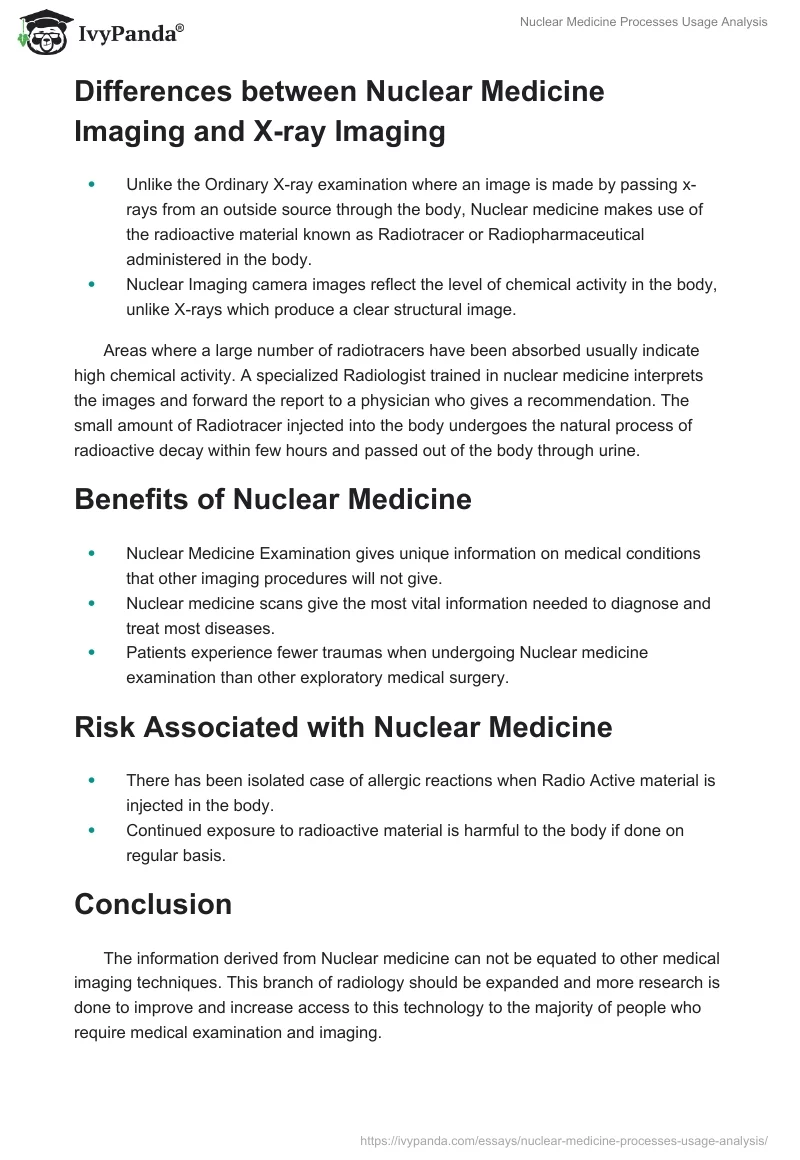Introduction
Nuclear medicine is a term used to refer to the subsection of Radiology that uses radioactive material, usually in very small proportions, to diagnose and/or treat diseases in humans. Nuclear Medicine procedures are usually painless medical tests, as they are noninvasive, that assist physicians to diagnose medical conditions. Radioactive materials used in Nuclear Medicine Imaging are known as Radiotracer or Radiopharmaceutical.
Radiopharmaceutical or radiotracer is inhaled as a gas, swallowed by mouth, or injected into the vein of a person undergoing Nuclear Medicine examination. Once the Radiotracer is in the body, it collects in the body part being examined where it gives off energy inform of Gamma rays. Gamma Camera attached to a computer is used to detect and measure the amount of radiotracer absorbed by the body and generate unique pictures giving details on the function and the structure of the body organ and other internal parts.
For better results, the Nuclear Images are superimposed with Magnetic Resonance Imaging (MRI) in a process known as co-registration to produce special views that allow the information derived from the two different studies to be connected and interpreted on one image for accurate diagnoses.
Some of the common procedures where doctors use nuclear imaging to determine the structure and functions of an organ, bone, tissue, and body system are:
- Brain abnormalities investigation
- Detection of cancer and the spread in the body
- Kidney function analysis
- Lung scanning for respiratory and blood flow problems
- Identification of Gallbladder blockage
Differences between Nuclear Medicine Imaging and X-ray Imaging
- Unlike the Ordinary X-ray examination where an image is made by passing x-rays from an outside source through the body, Nuclear medicine makes use of the radioactive material known as Radiotracer or Radiopharmaceutical administered in the body.
- Nuclear Imaging camera images reflect the level of chemical activity in the body, unlike X-rays which produce a clear structural image.
Areas where a large number of radiotracers have been absorbed usually indicate high chemical activity. A specialized Radiologist trained in nuclear medicine interprets the images and forward the report to a physician who gives a recommendation. The small amount of Radiotracer injected into the body undergoes the natural process of radioactive decay within few hours and passed out of the body through urine.
Benefits of Nuclear Medicine
- Nuclear Medicine Examination gives unique information on medical conditions that other imaging procedures will not give.
- Nuclear medicine scans give the most vital information needed to diagnose and treat most diseases.
- Patients experience fewer traumas when undergoing Nuclear medicine examination than other exploratory medical surgery.
Risk Associated with Nuclear Medicine
- There has been isolated case of allergic reactions when Radio Active material is injected in the body.
- Continued exposure to radioactive material is harmful to the body if done on regular basis.
Conclusion
The information derived from Nuclear medicine can not be equated to other medical imaging techniques. This branch of radiology should be expanded and more research is done to improve and increase access to this technology to the majority of people who require medical examination and imaging.
Reference
General Nuclear medicine, Web.
Nizar A. Mullani, Roy S. Herbst (2007) Molecular Imaging, Journal of Nuclear medicine.
Ramesh Chandra (1997) Nuclear Medicine Physics: The Basics, William& Wilkins, New Delhi.
Wendy B. Murphy, Dale C. Garell, Jack Murp (1995) Nuclear medicine, Facts on file publisher, United States.


